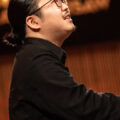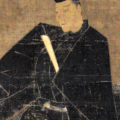The Origin of Ohtani Shohei’s “Dual Wield” as told by Hokkaido Nippon-Ham Fighters’ Manager Kuriyama Hideki and Scouting Director Ohbuchi Takashi
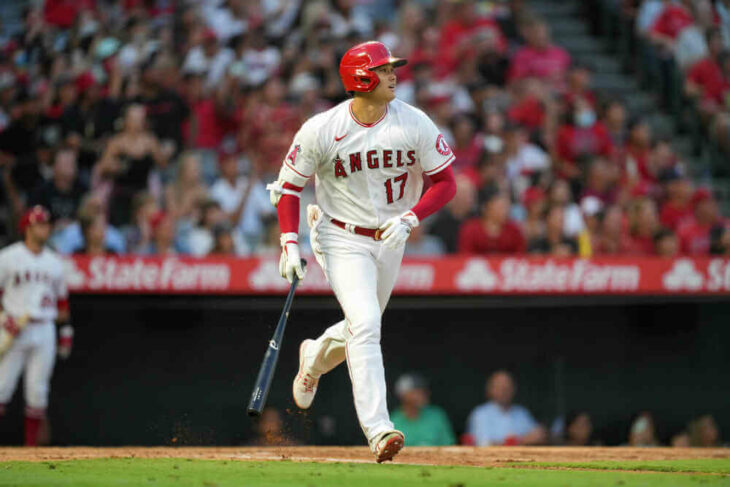
On Aug 11, 2021, Ohtani Shohei hit a home run against the Toronto Blue Jays at Angel Stadium in California, USA.
Photo: USA TODAY Sports/Reuters/Aflo
Ohtani wears a faint smile when told they want to train him as an athlete who can be both the ace pitcher and the fourth batter.
Suzuki Tadahira, writer
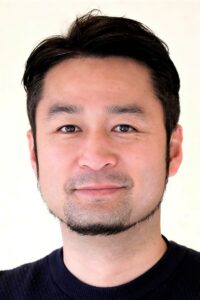
Suzuki Tadahira, writer
Starting in June of 2011, when people were still shocked about the unprecedented earthquake disaster (Great East Japan Earthquake), sports caster Kuriyama Hideki pursued a high school baseball team in the Tohoku coastal area that was damaged in the earthquake disaster. One day, this high school decided to hold a practice game with Hanamaki Higashi High School in Hanamaki City, Iwate Prefecture, a school with a strong team. It was there that Kuriyama saw the plays of athlete Ohtani Shohei for the first time.
“I have watched professional baseball forever but the ball angle and speed seen from the stands behind the backstop were truly shocking. I saw his batting after that and I was convinced. I felt like no one could decide if he was a pitcher or a batter. I thought that no one had the right to extinguish this potential.”
Then, as if by fate, Kuriyama accepted a request from the Hokkaido Nippon-Ham Fighters in autumn of that year to become their manager. That day, the young man he saw in Hanamaki City became an athlete aiming for a manager of professional baseball team and aiming to play professionally.
When the 2021 season began, Kuriyama not only took command, but also sought opinions from the organization.
Who should we nominate for this year’s draft meeting? When meeting with General Manager (GM) Yamada Masao and Assistant General Manager Yoshimura Hiroshi, Kuriyama offered up Ohtani Shohei’s name. During discussions, the front office asked the following multiple times.
“Which is he, pitcher or field player?”
“But I was only able to say that he was an athlete who couldn’t choose between the two. I remember that among all the people there at the time, no one said which they thought he was.”
Before the phrase “dual wield” was born, Kuriyama and the Fighters’ front man both shared a sense of awe over this enormous talent.
“He was more formidable than I imagined”
At the end of September, one month before the 2012 draft meeting, Fighters’ scouting director Ohbuchi Takashi visited Hanamaki Higashi High School. He went to talk with Ohtani, the foremost pick for the draft.
“I knew that he was trying to go directly from high school into the major league. But I honestly thought it was crazy for a high schooler to do that. I thought that I could impress him right away after talking about examples from the past.”
But unexpectedly, Ohtani kept his cool like steel.
“No matter what I said, his expression didn’t change. I sensed an incredible will. I realized that it wasn’t a surface thing but who he was from the bottom of his heart.”
It didn’t seem like the young man in his school uniform standing before Ohbuchi could be 18 years old. As Ohbuchi was returning to Hokkaido from Hanamaki, he got a cell phone call from Yamada, his superior.
“He was more formidable than I imagined. It was awkward.”
Even so, they didn’t switch out Ohtani for someone else as first pick. Two days before the draft meeting, this plan was announced.
“The draft meeting was about getting the players we wanted, not the players we could get.”
These words of GM Yamada were as unwavering as Ohtani’s will. Upon hearing this, Ohbuchi prepared himself.
“It was a risk if you consider that a draftee may lead nowhere at the draft meeting. But we went with it by drafting the athlete that we wanted most as an organization. And this produced results. The GM made the decision that time as well, sticking to the organization’s principles. That being the case, I had no choice but to do it.”
On October 25, 2021, the day of the draft meeting, the Fighters were the only organization among a total of twelve that nominated Ohtani, who had indicated that he was going to play in the major league.
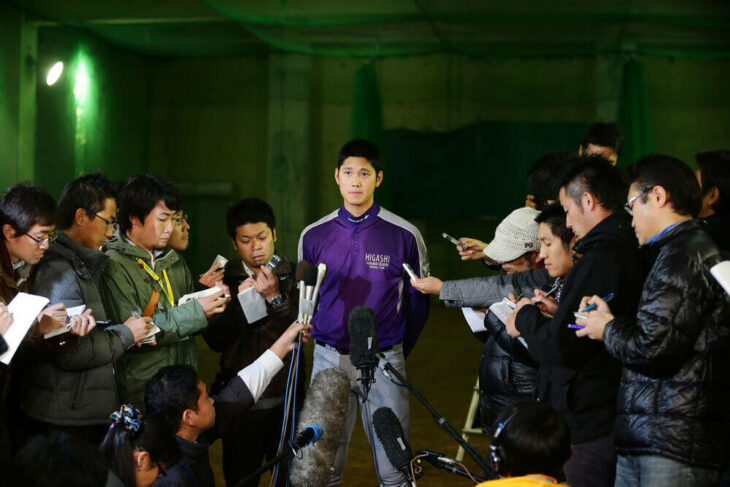
On October 25 in 2012, Ohtani Shohei was drafted by the Hokkaido Nippon-Ham Fighters as the first pick in the 2012 Nippon Professional Baseball (NPB) Draft. Many reports surrounded Ohtani at Hanamaki Higashi High School in Iwate Prefecture.
Photo: Nikkan Sports/Aflo
One week after the draft, Ohbuchi went to a family-friendly casual restaurant alone. He searched for a ray of hope to change Ohtani’s mind.
The day after being nominated, GM Yamada went to Hanamaki Higashi High School to greet Ohtani, but the draftee didn’t make an appearance. There was criticism from the general public towards the organization, wondering if the organization’s plan was to destroy the young man’s dreams.
The first vague step occurred during the visit to Ohtani’s home in Oshu City in Iwate Prefecture to offer the second draft greetings.
“I met his mother and father, and told that them we were considering having Ohtani play domestically if possible. And so I thought I would get them to consider this first.”
Ohbuchi considered creating materials for this reason. He wanted to demonstrate logic that would appeal to the mind rather than emotions. That’s why he opened up his computer on the table in the restaurant that morning.
“I thought that if I tried to persuade Ohtani then negotiations would end right there. That’s because we were enemies to him. So that’s why I thought that if his parents, who would be the most understanding, were to leave out these materials I gave them on the living room table, then there was a chance that Ohtani himself would look at them.”
In the materials made over three days and many cups of coffee, Ohbuchi included data along with the fact that the Japanese system picks up players as compared to the minor league system of the major leagues that eliminates players, the fact that while there are athletes in South Korea that take on the major leagues directly, the odds are low that they’ll actually play in the major leagues, and the fact that the reason Japanese major leaguers are active is because they have established techniques to compete mentally and physically in Japan and that they have gone to America with major league contracts. He wrote all of this in a way that would show that the Fighters were trying to make Ohtani Shohei’s dreams come true.
“Rather than asking him to come to the Fighters, we wanted him to come to the Fighters to make his dreams come true. Everyone felt the same way.”
Ohbuchi gave the 30-page document the title, “Guide to Your Dreams: A Study on the International Expansion of Youth in Japanese Sports.”
Ohtani did not show up to the first negotiations a few days later. But Ohbuchi had handed over the materials to his parents and had explained them using a projector. When that was over, he also explained the materials to the media. In doing so, previously-critical public opinion changed, with the Fighters becoming a seemingly good choice.
A Desire to be a Pioneer
But Ohbuchi’s anxiety didn’t go away. As the decision was Ohtani’s, the negotiations could end at any time. Through this anxiety, there was one word that was on his mind.
“The word was, ’pioneer.’ When I went to his house to greet him, Ohtani happened to be there and he made an appearance. I was hoping to get a hint from him, so I asked him what his hopes were. Among them was his desire to be a pioneer, and I felt like that was his greatest wish.”
This wish also stemmed from Ohtani’s goal of going directly from high school to the major leagues. While it was indeed the first time in Japan, there was a precedent in South Korea. While Ohbuchi sensed that Ohtani’s conviction of walking a path that no one else had walked before was strong, it seemed that Ohtani did not yet know what that path was. What came to mind for Ohtani was the dual role of ace pitcher and fourth batter (filled by the best batter on the team). This is what Manager Kuriyama said at one of the many scout meetings.
“Ohtani is a player who can’t be just a pitcher or a batter.”
But in modern professional baseball, specializing in a specific role has become the norm and being both ace pitcher and the fourth batter was not commonplace. It was thought that this was something that could only exist in the world of comic books.
Ohtani was at the table for the second negotiations. It seemed like the materials made by Ohbuchi had reached Ohtani via his parents, but he continued to be unmoved regardless of the conversation.
“He didn’t even say a word. I realized he was taking a stance of always saying, ‘no.’”
But his expression changed when GM Yamada made it clear that they were thinking of training him to be both ace pitcher and the fourth batter. At that moment, it looked as though Ohtani smiled just a bit.
The following day, the organization named their plan the “dual wield” and it decorated the front pages of every newspaper. This was followed by explanations about how uncommon of an idea this was.
Something began to change. Ohbuchi thought to entrust the rest of the process to Kuriyama.
“The GM made the decision and I appealed to logic. Finally, Kuriyama would appeal to emotion. I thought that the only person who could do this was Kuriyama. When he became manager, the Fighters’ players clearly changed. He was someone who handled baseball for the players.”
Towards a New Path
Kuriyama met Ohtani again at the third negotiations. Facing the young boy from that first day he saw him, he said the following to him as a human being.
“I want you to walk down a path no one else has ever walked down before.”
This was an invitation to the dual wield.
“As far as I knew from going to America multiple times for interviews and seeing games there, the minor league system there isn’t one that would recognize the dual wield. The environment is difficult and there is risk of injury. I thought that Shohei might be the player to change baseball, and so I had a strong conviction that choosing this path was definitely right for him. If it were your family, what would you think? What will you do to make your dreams come true? Without a plan, I struck at his emotions directly with only these questions. I didn’t say, ‘come play with the Fighters,’ not even once.”
The final negotiations between the Fighters and Ohtani took place on December 9, 2012, in a hotel in Oshu City. It was already decided that this would be the final negotiation on whether he would pick America or Japan. On that fateful day, Kuriyama appeared wearing a bright, light blue tie.
In the tense room, Kuriyama received the response he wanted to hear. Kuriyama was overwhelmed with joy in working with this talented young man who had made his first impact at that ball field in Iwate.
But that was only for a moment. In the next instant, a completely different emotion took over.
“I became scared. I had never been that scared before… I had been sure that we would succeed, but now I wondered if this was going to be okay as we hadn’t yet had any concrete ideas of how to make the dual wield a reality. This fear was all I felt.”
Walking along a path that has never before been walked upon. This was something Kuriyama could say about himself, as well. He had to lead the way into unchartered territory.
The Ever-blowing Unfavorable Winds
Starting in 2013, the air flowing through the Fighters clearly changed. It was from the tension of bringing in Ohtani who took action that was separate from others and was blazing a trail.
The manager’s office at Sapporo Dome is behind the bench by third base. The organization’s silver logo sparkles on the white wall and books and files are piled up on the woodgrain desks. Kuriyama often called Ohtani here.
“Are you okay?” This question was referring to his body and his handling of the pitcher and field player training but it also was aimed at his mental state.
Unfavorable winds were always blowing for the dual wield. In the first year, he had three wins as a pitcher and a batting average of .238, three home runs, and 20 runs batted in (RBI) as a batter. In his second year, he marked 11 wins, but ended the season with a batting average of .274, 10 home runs, and 31 RBI. With these numbers, critics who had once called him the great ace pitcher and the great batter now said either that he should concentrate on being a pitcher or that there was greater potential for him as a batter, showing a negative opinion that his talent was being wasted and that the dual wield should be abandoned. And it wasn’t just from outside. There were even some on the team who had this perspective.
“Everyone makes judgments based on whether or not there is a precedent. I felt like I was unable to pick one after having watched Shohei’s batting practice and his pitching in the bullpen. But it was no use trying to explain. We ultimately had to contain this external criticism with results.
Kuriyama was tolerant to the criticism as a manager who is exposed to wins and losses on a daily basis. But Ohtani was only around 20 years old. Was he being crushed by the criticism? Fear of this led Kuriyama to ask Ohtani if he was alright with the criticism in a quiet, safe place.
But Ohtani responded without a shift in his emotions.
“What? I haven’t heard any criticism.”
Training coach Nakagaki Seiichiro (currently a patrol head coach for Orix Buffaloes) supervised the work of adjusting the dual wield, and he also felt it was best to respond to the criticism and discord with results.
“But Ohtani wasn’t aware of the criticism at all, and it appeared that he was focused on how to become good at both positions. There may have been many difficulties, both mentally and physically, but he never showed that to anyone.”
Nakagaki is a specialist in physical strength and movement techniques. He has experience in the major league with Yu Darvish (currently a pitcher at the San Diego Padres). He believed that the key to this challenge was enormous physical strength and the ability to learn techniques.
“I think that baseball is a sport where physical strength is strongly born out of technique. Ohtani had a physical personality, the ability to learn techniques, and the ambition to pursue these.”
193-cm-tall Ohtani had longer legs than any other player. Because a tall player’s center of gravity is further away, there is a tendency for fine movements to be a bit clumsy, but Ohtani’s ability to coordinate his motion was outstanding.
“We tend to think that different elements of physical strength are needed to succeed as a pitcher and as a field player, but many of these elements are the same. There were many times when I also learned about baseball players’ techniques and strength when spending time with Ohtani.”
Dual Wield Is for the Team
2016, which was Ohtani’s fourth year, was when Kuriyama finally felt like the path towards the dual wield had opened.
At the end of May, they eliminated the DH (designated hitter) system for the game with the Rakuten Eagles in Miyagi Prefecture, and Ohtani was sent out to the field as the number 6 pitcher. At the pitcher’s mound, he gave up only one run in seven innings with a straight that exceed 160 km/h, and hit three hits from the batter’s box. He took on a leading role in every part of the game, and it was here that the undisputed, true dual wield was found.
“Up until that point, there were some carefully pitched balls in the initial pitching and I was concerned about this. But this changed as soon as he switched to the real dual wield. He swung his arm with a bang. You could see him giving his all in both pitching and batting, and seeing that, I thought, ‘Oh, maybe this is okay.’ I felt like it had begun at long last.”
And then something happened that was later called a miracle. When the Fighters caught up with the leading SoftBank Hawks who were 11.5 games away, they managed an upset victory with ace pitcher Ohtani’s shutout of 1 hit and 15 strikeouts at the end.
“It was said that we couldn’t create an ace pitcher and a fourth batter. But we had both of those tricks up our sleeve. Based on the situation, he would become the ace pitcher or the fourth batter. Of course, if he just did the dual wield, it would be meaningless. The dual wield is something that allows the team to win. He managed to do it that season. When he needed just three more innings to gain the title of the best earned run average (ERA) after achieving the specified number of pitches (143 innings) in the final stages of the season, I asked him what he would do, and he responded with, ‘It’s not on my radar, because you told me to help the team win, right?’”
Christmas Eve Batting Practice
Kuriyama became the top manager in Japan that season. Ohtani was selected for the Best Nine Award for both pitcher and DH—the first time this ever occurred—and he won MVP. However, this was not the peak for these two.
It was December 24 of that year when Kuriyama received a present that truly made his heart tremble. Just as the winter sun had set, his cell phone rang. A video had been delivered from the Fighters’ public relations department. When he asked what it was, they said Ohtani had been caught on camera doing batting practice in a deserted indoor practice arena.
“He is the kind of guy who wants to get better at baseball instead of taking a girl out to dinner on Christmas Eve. I realized that only people like him could go to unimaginable places.”
Kuriyama noticed that the time he had promised had come. He had seen into Ohtani’s heart. Would he go abroad?
“I’m going to America.”
Ohtani responded this way with his unwavering emotion. He headed to America at the end of the 2017 season. He sent inquiries to all thirty teams in the US, and after negotiating with seven teams, he transferred to the Los Angeles Angels, as they demonstrated the best will and environment to maintain Ohtani’s path for the dual wield.
Upon leaving, Ohtani said,
“When I came here, there weren’t many people who thought I could manage the dual wield. But those people were here for me. That was everything to me.”
Kuriyama asked Ohtani some questions when they were alone. Did you really not hear any of the criticism towards the dual wield? Were you ever at a breaking point emotionally?
Ohtani smiled a little upon hearing these questions. “No, well… it was… less than I had imagined.”
“Shohei understood all the perspectives of those around him. The reason he said he hadn’t heard any of the criticism was because he didn’t want me to worry about him…”
When they said goodbye, the mound plate Kuriyama gave to Ohtani had the following inscribed: “I believe you will become the world’s greatest athlete.”
And then, Kuriyama was free. He was released from the fear that had held him down since Ohtani chose the Fighters.
“While I believe that he will come back to Japan at some point, I also have a desire to not do baseball with Ohtani Shohei again. I was always worried and scared. If a resource like Ohtani were to break, I would have to resign to take responsibility. For five years, I was scared every day and there was nothing to do about it. That’s why it’s a good memory.”
The Decisions of These Men Created the Path
In the spring of 2021, Ohtani dominated as the ace pitcher for the Los Angeles Angels, acting as slugger in the American League home-run king fight. America was in an uproar over the shock of the dual wield. Upon seeing this, Ohbuchi had a thought.
“If he hadn’t played in Japan, surely there wouldn’t have been a path for both pitching and batting for him in America. There is no mistake in my mind. I thought Ohtani and Kuriyama could do it. I was able to imagine it. I think it’s because of their strength.”
He takes pride in the fact that each decision made by the men of this organization at the time created a path for the dual wield that led to America. At the same time, it also seems as if everything had already been determined from the start.
“More than us having guided him, I get the sense that it was predetermined that he would go to that stage from the start, and the adults were simply drawn to this.”
There is a strange sensation when seeing Ohtani, who didn’t see walls as barriers.
“The top athletes improve themselves. While there may be many who are driven by a sense of mission to put in effort, I sometimes feel like Ohtani just does both pitching and batting simply because it’s fun, as if he feels like batting and pitching is more fun than anything else in baseball. Lately, I’ve been thinking that this could be his greatest attribute.”
Translated from “Nippon-Ham Kuriyama kantoku, Ohbuchi sukauto-bucho ga kataru Ohtani Shohei ‘Nitoryu’ no genten (The Origin of Ohtani Shohei’s “Dual Wield” as told by Hokkaido Nippon-Ham Fighters’ Manager Kuriyama Hideki and Scouting Director Ohbuchi Takashi),” Bungeishunju, July 2021, pp. 188-195. (Courtesy of Bungeishunju, Ltd.) [September 2021].
Keywords
- Suzuki Tadahira
- journalist
- Hokkaido Nippon-Ham Fighters
- Sapporo Dome
- Kuriyama Hideki
- Ohbuchi Takashi
- Yamada Masao
- baseball
- scouting
- Ohtani Shohei
- dual wield
- major league baseball
- American League
- Los Angeles Angels
- home-run king



